Learning guitar chords is a foundational step for any aspiring guitarist, and the E minor (Em) chord is a must-know for beginners and experienced players alike. This easy-to-learn and versatile chord appears in countless songs across genres. Let’s dive into how to play the Em chord on guitar, practice tips, and why it’s so important.
Your First Steps to Playing the Em Chord
The Em chord is remarkably simple to form, requiring only two fingers. Here’s your step-by-step guide:
- Finger Placement: Place your middle finger (2nd finger) on the 5th string (A string) at the 2nd fret.
- Second Finger Down: Place your ring finger (3rd finger) on the 4th string (D string) at the 2nd fret.
- Strum: Strum all six strings of the guitar.
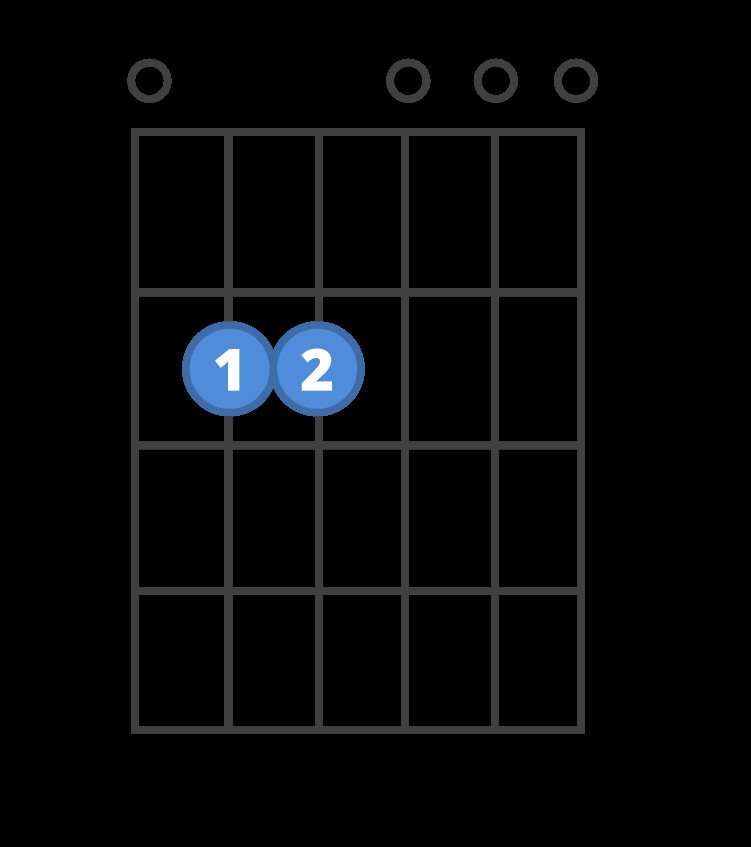 Diagram of the Em guitar chord. Second finger on the fifth string at the second fret, and third finger on the fourth string at the second fret.
Diagram of the Em guitar chord. Second finger on the fifth string at the second fret, and third finger on the fourth string at the second fret.
You might wonder if using your index and middle fingers would be easier. While possible, using your middle and ring fingers offers a significant advantage. Keeping your index finger free makes transitioning to other common chords like C major, A minor, or D major smoother and faster. This efficient finger positioning is a technique that will benefit you as you learn more chords and songs.
Em Chord and E Major: Spotting the Difference
If you’re already familiar with the E major chord, you’re in luck! The E minor chord is just a slight variation away. The key difference lies in just one finger position.
E Minor (Em)
 Diagram of the Em guitar chord. Second finger on the fifth string at the second fret, and third finger on the fourth string at the second fret.
Diagram of the Em guitar chord. Second finger on the fifth string at the second fret, and third finger on the fourth string at the second fret.
E Major (E)
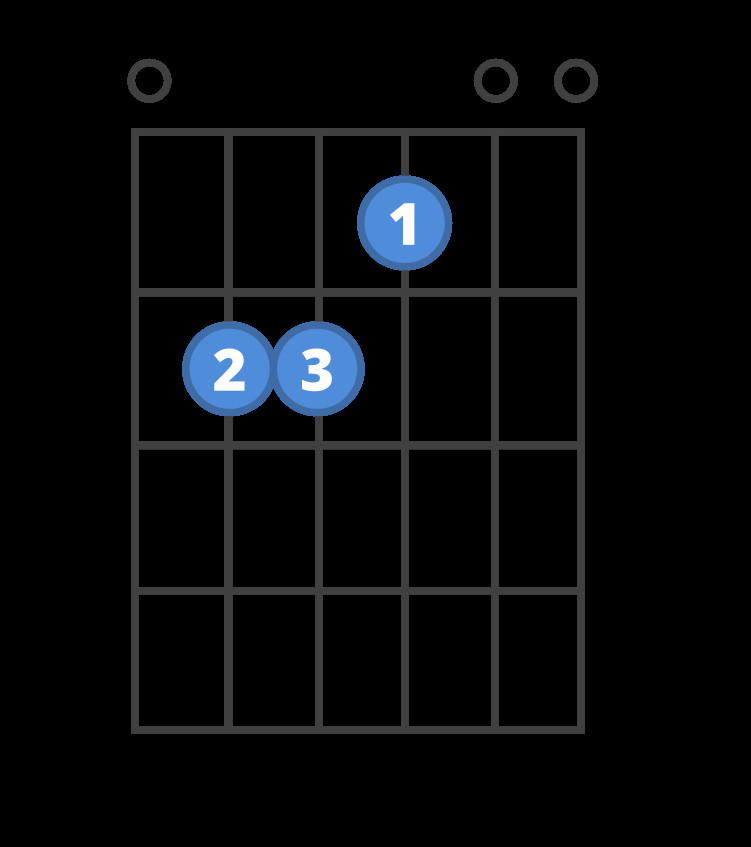 Diagram of the E major guitar chord. Index finger on the third string at the first fret, middle finger on the fifth string at the second fret, and ring finger on the fourth string at the second fret.
Diagram of the E major guitar chord. Index finger on the third string at the first fret, middle finger on the fifth string at the second fret, and ring finger on the fourth string at the second fret.
A Touch of Music Theory:
Looking at the chord diagrams, you can see that the E major chord shape raises the note on the 3rd string (G string) by a half step, changing it from a G to a G#. This seemingly small change transforms the interval from a minor third to a major third, which is the defining difference between a minor and major chord. Understanding this subtle shift is key to grasping the tonal character of major and minor chords.
Effective Practice Techniques for the Em Chord
To solidify your Em chord and improve your chord changes, try the “On-Off Drill.” This simple exercise is excellent for muscle memory and finger dexterity.
- Set the Chord: Place your fingers in the Em chord shape.
- Strum and Count: Strum the chord for four beats, counting aloud.
- Lift and Rest: Remove your fingers from the strings for four beats.
- Repeat: Immediately place your fingers back into the Em shape and repeat the process.
Repeating this on-off motion helps your brain and fingers memorize the chord shape. The four-beat intervals provide time to ensure accurate finger placement each time.
Once comfortable, elevate your practice by switching between Em and another chord, such as the G major chord. Smooth chord transitions are crucial for playing songs fluidly.
E Minor (Em)
 Diagram of the Em guitar chord. Second finger on the fifth string at the second fret, and third finger on the fourth string at the second fret.
Diagram of the Em guitar chord. Second finger on the fifth string at the second fret, and third finger on the fourth string at the second fret.
G Major (G)
 Diagram of the G guitar chord. Index finger on the sixth string at the third fret, middle finger on the first string at the third fret, and ring finger on the fifth string at the second fret.
Diagram of the G guitar chord. Index finger on the sixth string at the third fret, middle finger on the first string at the third fret, and ring finger on the fifth string at the second fret.
Play Along and Put Em Chord into Practice
Now, grab your guitar and put the Em chord into action! Practice the Em chord alongside other fundamental chords like G, D, and C with a playalong track.
After practicing with the playalong, dedicate five minutes to simply switching between these chords. Focus on maintaining a steady rhythm without pauses. This exercise builds chord transition speed and accuracy, essential skills for playing songs.
Expanding Your Chord Vocabulary with Em
The Em chord sounds fantastic with a variety of other chords, opening up a world of song possibilities. Here are a few chords that pair beautifully with E minor:
[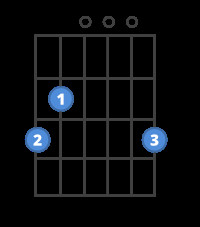 Diagram of the G guitar chord.
Diagram of the G guitar chord.
G Major Chord Lesson Link](/chords/g-major)
[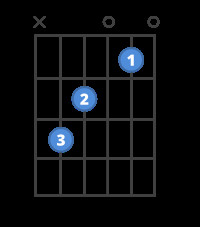 Diagram of the C guitar chord.
Diagram of the C guitar chord.
C Major Chord Lesson Link](/chords/c-major)
[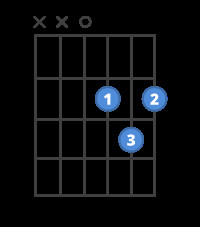 Diagram of the D guitar chord.
Diagram of the D guitar chord.
D Major Chord Lesson Link](/chords/d-major)
[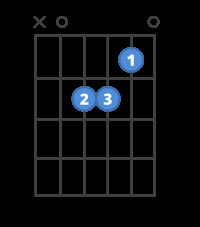 Diagram of the Am guitar chord.
Diagram of the Am guitar chord.
A Minor Chord Lesson Link](/chords/a-minor)
Explore More Easy Minor Chords
Once you’ve mastered Em, expand your minor chord knowledge with these other easy-to-learn minor chords:
[ Diagram of the Am guitar chord.
Diagram of the Am guitar chord.
A Minor Chord Lesson Link](/chords/a-minor)
[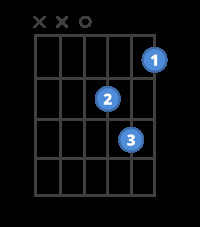 Diagram of the Dm guitar chord.
Diagram of the Dm guitar chord.
D Minor Chord Lesson Link](/chords/d-minor)
Continue Your Guitar Journey with ChordBank
[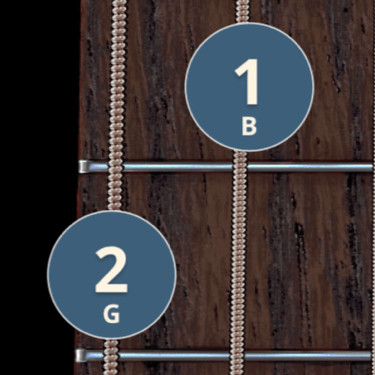
Explore Thousands of Guitar Chords »
Chord Library Link](/guides/chords/)
[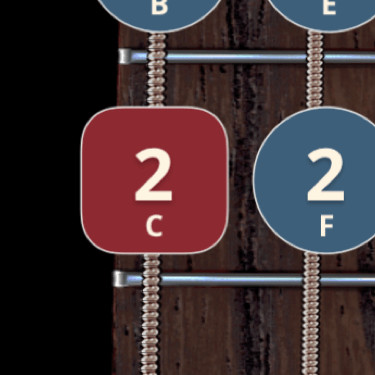
Practice Guitar Scales »
Scales Guides Link](/guides/scales/)
[
Take Guitar Lessons »
Lessons Section Link](/guides/lessons/)
[
Use a Metronome »
Metronome Tool Link](/guides/metronome/)
[
Tune Your Guitar »
Tuner Tool Link](/guides/tuner/)
[
Reverse Chord Finder »
Reverse Chord Finder Link](/guides/reverse/)
[
Play with Backing Tracks »
Backing Tracks Link](/guides/backing-tracks/)
[
Save Your Favorite Chords »
Saved Chords Feature Link](/guides/saved/)
[
Practice with Flashcards »
Flashcards Feature Link](/guides/flashcards/)
Interactive Learning Tools
[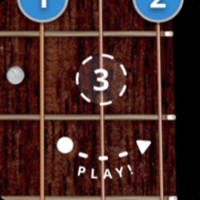
Start Practicing the Em Chord Now »
Chord Coach for Em Chord](https://www.chordbank.com/o/chordtraining?gtx=Em)
[
Watch a Video Lesson for Em Chord »
Video Lesson for Em Chord – 0:50](https://www.chordbank.com/o/rkvid?vid=Em)
About the Author:
Anna Freitas is a guitarist and vocalist with a B.A. from Berklee College of Music. She performs throughout New England and teaches guitar both in-person and online.


